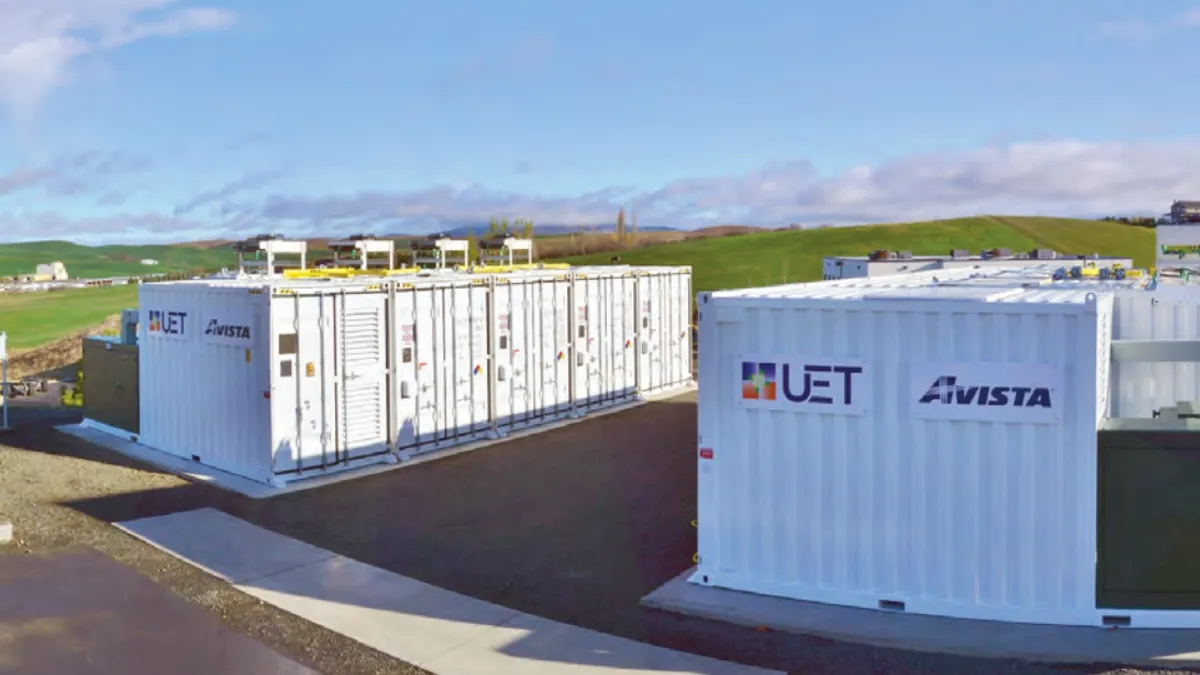Lithium-ion batteries rule the market for energy storage. Flow battery makers want a share of that market, but they have a tough time competing on costs.
Researchers working on new materials for flow batteries are trying to bring down those costs, but the innovation that could make the biggest difference could come from the financial sector, not a laboratory.
At GTM Media’s Energy Storage Summit in December, 500 senior level energy professionals were asked whether lithium-ion batteries would continue to dominate the market for energy storage. A quarter of the respondents said they would. That is not very surprising, but nearly half, 46%, said that flow batteries have the best chance of supplanting li-ion batteries.
Just out of reach?
Flow batteries are one of those technologies that seems to be perpetually just out of reach. According to GTM data, flow batteries have about a 5% share of the U.S. stationary storage market compared with lithium-ion’s 95% share. (Lead acid batteries have about a 0.5% share.)
“Flow battery manufacturers say they are already competitive; you can draw your own conclusions,” Daniel Finn-Foley, senior energy storage analyst at GTM Research, told Utility Dive.
After Tucson Electric Power signed a power purchase agreement with NextEra Energy for a solar-plus-storage system at less than $0.045/kWh last spring, ViZn Energy Systems said it would replicate the deal with its own technology at $0.04/kWh.
That hasn’t happened, but ViZn sees a market opportunity. The company says its flow batteries — it uses a zinc-iron chemistry — have an edge over lithium-ion because they can cycle more frequently and have a longer life span so, unlike lithium-ion batteries, they do not face replacement costs part way through the life of a project.
Flow batteries are also safer — they are not liable to explode — and they do not have the duration limitations of lithium-ion batteries. Flow batteries can run well past the four-hour mark that is the practical limit of many lithium-ion battery installations.
Disadvantage: cost
Flow batteries have several advantages over lithium-ion technologies, but at this point in market evolution, they have one big disadvantage: cost. Lithium-ion batteries cost roughly $300/kWh. They set the price to beat in the market; and it is a target that is moving in one direction: down.
StorEn Technologies claims to have developed a disruptive flow battery technology that can produce a 50% cost reduction. “We are targeting a price of $400/kWh with a 25 year duration with no decay,” Angelo D’Anzi, the company’s chief technology officer, told Clean Technica.
StorEn’s claims and ViZn’s zinc-iron chemistry aside, the most prevalent flow battery technology uses vanadium, a relatively rare element that is costly and hard to dispose of properly. Researchers working to come up with viable alternatives have tried a variety of chemistries, including variations on vitamin B2, and are using computer modeling to design molecules that could improve on existing flow battery chemistries.
Furthermore, the energy in a flow battery is stored in electrolytes that create electrical current when they are pumped through a membrane. The size of a flow battery can be readily scaled by changing the size of the tanks that hold the electrolytes. And, unlike lithium-ion chemistry, the electrolytes do not degrade over time. But the electrolytes and membranes can be costly and pumping electrolytes back and forth extracts a cost that results in a lower roundtrip efficiency than lithium-ion batteries.
Despite the challenges, industrial giants have also entered the race to improve flow batteries. Lockheed Martin plans to unveil a new chemistry this year that it says could make flow batteries competitive with lithium-ion in the four-hour duration market.
Convincing customers
One of the biggest challenges that flow battery contenders face is convincing risk averse customers that this new technology is reliable. Flow batteries have been around for a long time, but they do not have much of a track record in large-scale commercial installations.
That is beginning to change. Last spring, San Diego Gas & Electric unveiled a 2 MW, 8 MWh vanadium redox flow battery installed by Sumitomo. Also last spring, UniEnergy Technologies installed a 2 MW, 8 MWh flow battery for the Snohomish County Public Utility District in Washington.
“If flow batteries want to be competitive, they need to put a stake in the ground,” Finn-Foley said. Their best bet is in the market for longer duration storage, but they also want to be competitive in the four-hour market, he said.
The recent flow battery projects are a start. But bankers want to see a track record of successful projects before extending credit. Without a track record, flow batteries become a hard sell.
New insurance products
One of the ways flow battery companies have begun to try to bridge that gap is with new insurance products. In August, Vionx Energy teamed up with New Energy Risk to provide insurance coverage for its flow batteries. The policy covers energy, power, round-trip efficiency and availability of Vionx’s vanadium redox flow systems. “It is like a master policy with projects scheduled underneath it,” Tom Dickson, New Energy Risk’s CEO, told Utility Dive.
Bankers are not geared up to take technology risk, but they do understand credit risk, Dickson said. “Essentially, we are substituting credit risk for technology risk.”
Dickson said the deal with Vionx was a first for the industry, but it is a deal he would like to replicate. “We were established to do this, to spur adoption” of new, clean technologies, he said. “Our hope is that we can spur adoption so companies can get the capital to flow back into their business.”
“It is safe to say that we will be underwriting more policies in the energy storage market in the next 12 to 18 months,” Dickson said.
The idea is to help foster economies of scale. By making a technology or project bankable, larger projects can be put in place, spurring the demand needed to make the manufacture of materials and components more efficient.
Dickson said New Energy Risk’s partnership with XL Catlin, a global insurance and reinsurance company, along with other reinsurance companies, gives New Energy Risk the backing of a $15 billion balance sheet.
Economies of scale
A key to the success of flow batteries, as with any new technology, is achieving economies of scale. But achieving economies of scale for flow batteries is not as simple as stacking together small components to make a large project, Craig Horne, vice president of business development for energy storage at RES Americas, a renewable energy development company, told Utility Dive.
There are mechanical issues with flow batteries, Horne said. It is not efficient to multiply the pipes and pumps of several small systems to build a big system. As an example, he said it is much more efficient to build a larger flow battery by using fewer, but wider diameter, pipes.
That is an important consideration for developers because a 2 MW project can use up as much of a company’s time and resources as a 20 MW project. The problem is that the market cannot just jump to the larger scale project. “It is a step-by-step progression,” Horne said.
That is the gap New Energy Risk is trying to help bridge by helping flow battery projects move up to the next increment in project scale. But, as Horne said, to take that risk “you have to have the motivation.” Again, it comes down to costs.
Five years ago, lithium-ion and flow batteries were on a more equal footing. The market was looking for a solution, Horne said, but now there is an incumbent. And “flow batteries are a long way from unseating lithium-ion,” Horne told Utility Dive.
But that is the wrong way to look at it, Horne said. Flow batteries are not going to unseat lithium-ion, but they could gain market share over time; perhaps as soon as 2025, flow batteries could have 10% of the market, he said.





















